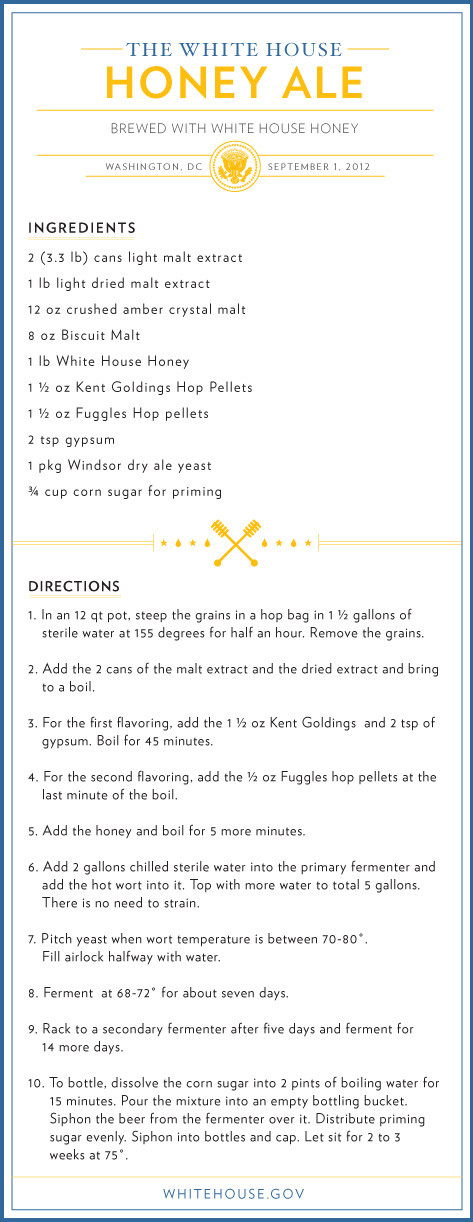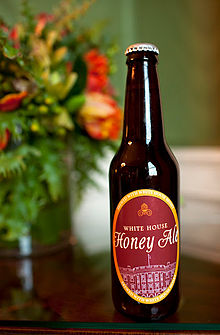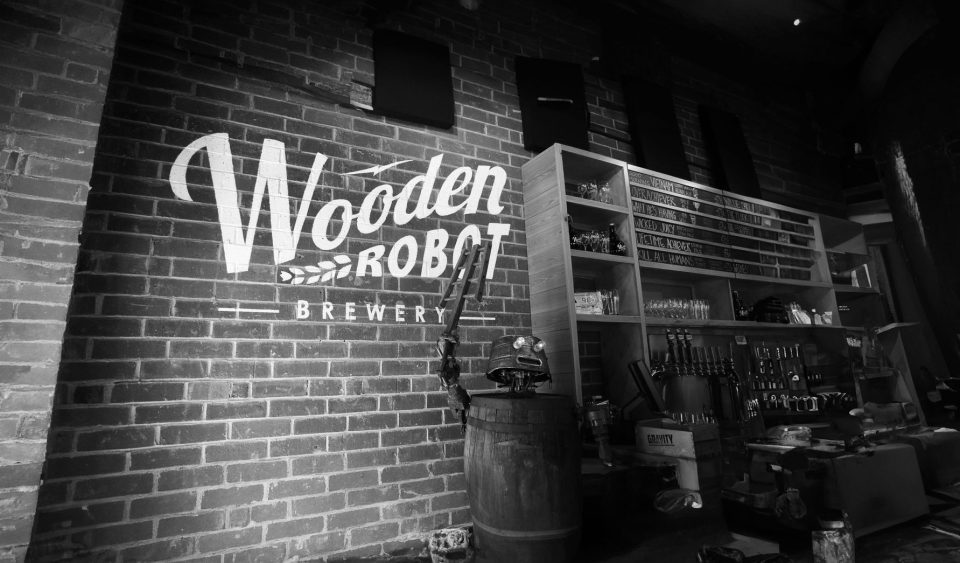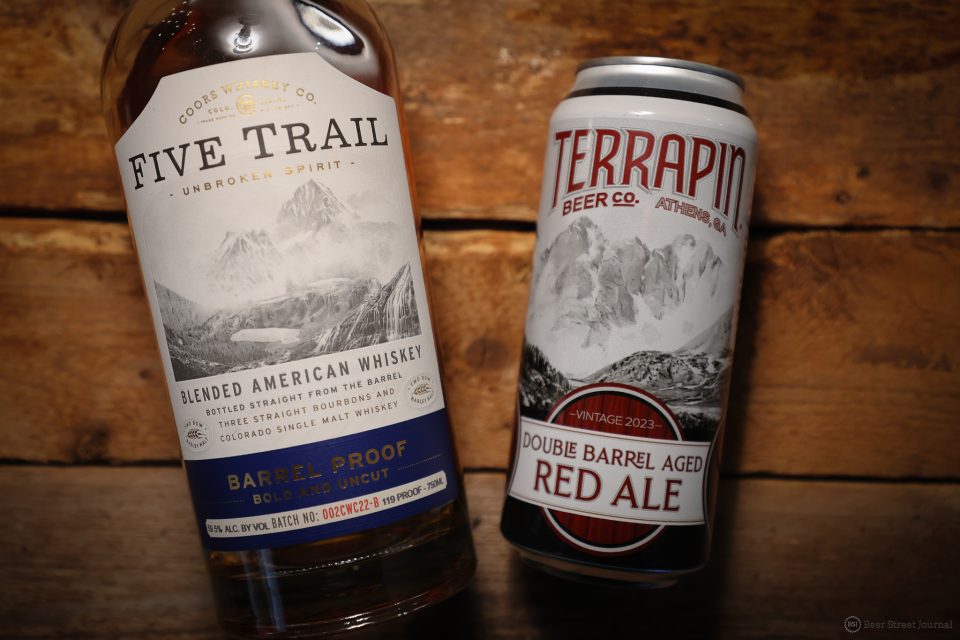Topic Archives: Home Brewing
Armed Alabama Agents Confiscate Home Brewing Supplies

Do you need any proof that Alabama legislature is a backwards thinking? Read on.
My good friend Kraig Torres founded Hop City a few years ago in Atlanta, Georgia. The store sells 1,800+ beers, wine, and homebrewing supplies. Not to mention a 60+ growler station. Hop City is ranked among the best beer stores on planet earth on RateBeer.com Building upon his great success, Kraig decided to open a second location in Birmingham, Alabama. Recent law changes make Birmingham a great place for a second Hop City.
Kraig has received all the necessary permits to open except for one – the liquor license from the Alabama Beverage Commission. Kraig applied for this license, and with it, provided a floor plan. In the floor plan, he included an area for home brewing supplies. Home brewing is illegal in Alabama, but selling the ingredients is not. Kraig and his lawyer have done extensive diligence on the matter.
Yesterday (Thursday), ARMED ABC agents raided Hop City Birmingham, and confiscated books on home brewing, grain, wort chillers, and more. The agents threatened to arrest his store manager because he harbored materials used to make beer. The ABC Agents loaded up a van with $7,000 of Kraig’s inventory, stating they would be back the next day for the rest. Every single grain, hop, and carboy has to be out of the Hop City Birmingham location before a license will be granted.
Kraig tells me that his opening will now be delayed, until his license can be granted. “I’m being held hostage by the ABC board.”
Sound off. What are your thoughts on armed men confiscating books on brewing? Bagging hops and grain like it’s cocaine?
UPDATE 9/22/12. 9 AM: The agents were armed. Whether the guns were drawn, or pointed at employees is up for contention.
Ed. Note: Pic above is one BSJ took at the Atlanta Hop City location.
The Official Saison Du Buff Home Brew Recipe
Stone Brewing Co has released the home brew recipe for the three-way collaboration saison with Victory Brewing, & Dogfish Head. (I believe it was already published in the recent Stone book…) Regardless, for those home brewers out there, have at it.
Dogfish Head / Victory / Stone Saison du BUFF homebrew recipe
Is this a complete guide to homebrewing? No way. Is it a recipe you can use alongside such a guide? Absolutely.
Yield: 5 gallons (about fifty-four 12-ounce bottles or thirty 22-ounce bottles)
4 pounds, 15.8 ounces crushed German pilsner malt
4 pounds, 15.4 ounces crushed North American two-row pale malt
1 pound, 14.6 ounces crushed wheat malt
10.2 ounces flaked ryeAbout 9 gallons plus 4 cups water
0.58 ounce Centennial hops (9.8% alpha acid)
1/2 teaspoon Irish moss
2.58 ounces Amarillo hops (8.5% alpha acid)
0.24 ounce fresh parsley
0.09 ounce fresh rosemary
0.09 ounce fresh lemon thyme
0.04 ounce fresh white sage1 (125 ml) package Wyeast Labs WY3711 French Saison Yeast
0.77 ounce Citra hops (11.0% alpha acid)1 cup plus 3 tablespoons light dried malt extract
I can’t stress it enough: clean and sanitize everything.
Mashing
In a 10-gallon brew kettle, combine the crushed malts and flaked rye with 4 gallons of 163°F water. The water should cool slightly when mixed with the grain. Cover and hold the mash at 149°F for 2 hours.
For safety’s sake, set up your propane burner outside. Set the brew kettle of mash on top and heat to 160°F, stirring frequently to avoid scorching. Turn off the heat. The mash will continue to increase in temperature to about 165°F.
Lautering and Sparging
After mashing is complete, carefully transfer the mash to the lauter tun to separate the liquid (the wort) from the grains. Run a length of vinyl tubing from the lauter tun to the brew kettle. Let the first few quarts of liquid run through. It will be cloudy and contain some undesirable particulates. Once the liquid coming through is clear, stop the flow and pour the cloudy liquid back into the lauter tun, where the husks from the crushed grain will act as a natural filter and help remove the sediment.
Allow the remainder of the wort to drain into the brew kettle at a slow, steady rate, restricting the flow with a plastic crimp on the tube. Once the liquid is lower than the level of the grain bed, begin the sparge by slowly sprinkling 5 gallons plus 1 cup of 168°F water over the grains.
The sparge water, which should never exceed 170°F, is added to the grain and allowed to drain off at a slow rate (regulated by the plastic crimp), extracting the remaining sugars and maximizing yield. This is not a step to be rushed; be prepared to spend at least an hour on lautering and sparging. Once the last of the sparge water has filtered through the grains and the flow from the lauter tun stops, you’re ready to begin the boil.
The Boil
Set the brew kettle of wort on your outdoor propane burner and add water to bring the wort level up to about 6 gallons plus 12 cups, if needed. Bring the wort to a rapid, rolling boil. As it begins to come to a boil, a layer of foam and scum may develop at the surface. Skim it off and discard. Once the wort is at a full boil, put a hops bag containing the Centennial hops in the kettle and set a timer for 90 minutes. Stir the wort frequently during the boil, and be watchful to avoid boilovers.
At 15 minutes before the end of the boil, stir in the Irish moss. When the boiling time is over, turn off the heat and put a hops bag containing the Amarillo hops, parsley, rosemary, lemon thyme, and white sage in the kettle. Cover the kettle and immediately begin cooling the wort quickly. Place the brew kettle in a large sink, bathtub, or cooler partially filled with ice water. Place your sanitized wort chiller in the wort and run cold water through it until the wort comes down to 70°F.
Pitching the Yeast and Fermentation
Once the wort has cooled to 70°F, discard the spent hops and herbs and check the specific gravity of the wort with a hydrometer. The target starting gravity is 1.059 (14.5 Plato).
The yeast should be removed from the refrigerator about 2 hours before use so it acclimates to room temperature. Slowly pour the cooled wort into a sanitized primary fermentation bucket. Stir vigorously with a sanitized spoon or carefully shake the fermenter (sealed of course) for about 10 minutes to aerate the wort. Shake the container of yeast, add it directly to the wort, and stir vigorously to combine. Cover the bucket with the lid, fitted with the proper stopper and an airlock filled halfway with water. Place the bucket in a cool, dark place and keep it at 70°F.
Signs of primary fermentation should be evident after about 6 to 12 hours. Let the wort ferment until the bubbles coming from the airlock have slowed to a rate of about one per minute. This can take anywhere from 4 days to over 1 week.
Once this occurs, it’s time to transfer the beer to a (sanitized) glass carboy for secondary fermentation. Attach a length of (sanitized) vinyl tubing to the (sanitized) racking cane, and carefully siphon the wort into the carboy, being careful to leave behind the sediment at the bottom of the plastic fermenter. The vinyl tubing should extend to the bottom of the carboy to prevent splashing. While oxygen is crucial for the yeast at the beginning of fermentation, after that you want to minimize the wort’s exposure to it.
Dry Hopping
Put the Citra hops in a hops bag and place it in the carboy. Seal the carboy with the drilled stopper and an airlock filled halfway with water and ferment at 70°F. After 7 days, dry hopping is complete. Remove the hops bag and discard the hops. Check the specific gravity of the beer. If it’s reached the target final gravity of 1.007 (1.8 Plato), it’s ready to bottle. If not, allow it to continue fermenting at 70°F until it reaches the target.
Bottling
When you’re ready to bottle, be sure to clean and sanitize the bottles, caps, bottling wand, racking cane, and tubing. Put the dried malt extract in a medium saucepan and stir in just enough water to dissolve it. Bring the mixture to a boil over high heat. Remove from the heat, cover, and let cool slightly. Pour this mixture into a clean, sanitized bucket with a spigot. Attach a length of vinyl tubing to the racking cane and carefully siphon the beer into the bucket, being careful to leave behind the sediment at the bottom of the carboy. The vinyl tubing should extend to the bottom of the bucket to prevent splashing.
Remove the racking cane and attach the bottling wand to one end of the vinyl tubing and the other to the spigot at the bottom of the bucket. Open the spigot
and begin filling the bottles, leaving about 1 inch of headspace in each bottle. Once the bottles have been filled, cap them using a bottle capper (or simply close the tops if you’re using swing-top style bottles). Store properly in a cool, dry place for 2 weeks so the beer can properly carbonate. Cheers!
White House Honey Ale, Now In A Kit
CraftABrew.com is now offering everything you need in a kit to brew your own White House Honey Ale. For a small $48 dollars, you can easily make your own Presidential home brew.
The kit contains:
-Guide to Craft Brewing
-Recipe Kit: Light malt extract, brewers grains (Amber crystal, Biscuit malt), hops (Kent Goldings & Fuggles), yeast (Windsor dry ale yeast), sanitizer and a brewing bag.
Read more: White House Home Brew
A Look Inside Brewing At The White House [Video]
Here is a rare look at the brewing set up at the White House. The chefs walk you through the creation of Honey Ale and Honey Porter.
White House Releases Homebrew Recipes
The White House has officially released their widely talked about home brew recipes. Apparently these recipes are the first evidence of beer being brewed on White House grounds. George Washington brewed at Mount Vernon,other forefathers at their estates. The first beer brewed was White House Honey Brown. It looks like that recipe will remain a mystery. However, two recipes were released – White House Honey Ale, and Honey Porter. Each made with honey from the White House hives. President Obama has stocked his campaign bus with these home brews below.
Buffalo Wild Wings Hurts Home Brewers Feelings with New Commercial [Video]
Buffalo Wild Wings might have stepped in it a bit with this new commercial. A lot of home brewers don’t seem to find the find the humor this beer/wing/football spot. Just check the comments.
Lawyer Requests White House Beer Recipe Through Freedom Of Information Act
Genius. The White House has it’s own brewery now, and President Obama’s campaign bus is stocked with 1600 PA Avenue brew. The White House Honey Ale has been the talk of everyone from Jim Koch to home brewers nationwide. Well, a lawyer in California has requested the recipe via the Freedom of Information Act. Brilliant.
Submitted to BSJ is copy of the request to the White House, asking for information pertaining to “White House Honey Ale“. Would be interested to see how the administration responds.
Scott Talkov, Esq.
3880 Lemon St., Fifth Floor
Riverside, CA 92501
(951) 682-(BSJ Omitted)
(BSJ Omitted)@gmail.com
August 21, 2012
SENT BY FACSIMILE ONLY
White House Office of Administration
FOIA Officer
725 17th Street NW
Washington, DC 20503
Fax: (202) 456-7921
Re: FOIA Request
Dear White House Office of Administration FOIA Officer :
This is a request under the Freedom of Information Act.
I request that a copy of the documents concerning the following subject matter be provided to me: The recipe of any beer brewed at the White House from January 21, 2009 to present, including, but not limited to beer labeled as “White House Honey Ale.”
I also request that a copy of the documents concerning the following subject matter be provided to me: Any invoices, receipts of other documents reflecting the purchase of any brewing equipment or ingredients purchased for use in the White House from January 21, 2009 to present.
I further request that a copy of the documents concerning the following subject matter be provided to me: Any time sheets or other documents reflecting the name of any personnel responsible for brewing in the White House from January 21, 2009 to present.
As you are likely aware, so long as the government agency has created or obtained the requested materials, the document is an “agency record” within the meaning of the Freedom of Information Act. (United States DOJ v. Tax Analysts, 492 U.S. 136, 144 (1989).) Such records include all books, papers, or other documentary materials made or received by an agency of the United States Government. (See 44 U.S.C. § 3301; Forsham v. Harris, 445 U.S. 169, 183 (1980).) As such, any recipes, invoices, or other documents reflecting brewing at the White House are properly the subject of the Freedom of Information Act.
In order to help to determine my status for purposes of determining the applicability of any fees, you should know that I am a home brewer that is seeking to understand the methods, tools and ingredients used by the first beer to be brewed in the White House to improve my home brewing attempts to clone the White House Honey Ale for personal use, in compliance with Title 27 of the Code of Federal Register, section 25.205(a). This request is not made for commercial use.
I am willing to pay fees for this request up to a maximum of $100.00. If you estimate that the fees will exceed this limit, please inform me first.
I also request a waiver of all fees for this request. Disclosure of the requested information to me is in the public interest because it is likely to contribute significantly to public understanding of the operations or activities of the government and is not primarily in my commercial interest. Specifically, this information improves the understanding of home brewers on the methods used to produce America’s presidential beer. This brewing at the White House coincides with a dramatic increase in home brewing throughout the nation. Accordingly, the White House will be able to educate Americans on the methods used in the production of home brewing.
I also include a telephone number at which I can be contacted, if necessary, to discuss any aspect of my request.
Thank you for your consideration of this request.
Very truly yours,
/s/ Scott Talkov
Scott Talkov, Esq.










